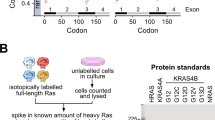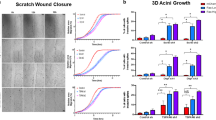Abstract
ras genes encode members of the small GTP-binding proteins. Ras protein is highly conserved in various species from yeast to humans and plays a key role in signal transduction. Ras is related to cell proliferation and differentiation. While, in addition, mutations in the ras genes are implicated in a variety of tumors. However, the physiological functions and specific roles of each ras gene, H-ras, K-ras and N-ras, are still not fully understood. To clarify the role of the K-Ras in vivo, we generated K-ras mutant mice by gene targeting. In contrast to the findings that H-Ras-deficient mice and N-Ras-deficient mice are born and grow normally, the K-Ras-deficient embryos die progressively between embryonic day 12.5 and term. At embryonic day 15.5, their ventricular walls are extremely thin. Besides, at embryonic day 11.5, they demonstrate increased cell death of motoneurons in the medulla and the cervical spinal cord. Our results thus indicate K-Ras to be essential for normal development in mice and residual Ras composed of H-Ras and N-Ras cannot compensate for the loss of K-Ras function in the mutant mice.
This is a preview of subscription content, access via your institution
Access options
Subscribe to this journal
Receive 50 print issues and online access
$259.00 per year
only $5.18 per issue
Buy this article
- Purchase on Springer Link
- Instant access to full article PDF
Prices may be subject to local taxes which are calculated during checkout
Similar content being viewed by others
Author information
Authors and Affiliations
Rights and permissions
About this article
Cite this article
Koera, K., Nakamura, K., Nakao, K. et al. K-Ras is essential for the development of the mouse embryo. Oncogene 15, 1151–1159 (1997). https://doi.org/10.1038/sj.onc.1201284
Received:
Accepted:
Issue Date:
DOI: https://doi.org/10.1038/sj.onc.1201284
Keywords
This article is cited by
-
Ras protein abundance correlates with Ras isoform mutation patterns in cancer
Oncogene (2023)
-
Molecules linked to Ras signaling as therapeutic targets in cardiac pathologies
Biological Research (2021)
-
Ras isoforms: signaling specificities in CD40 pathway
Cell Communication and Signaling (2020)
-
K-Ras prenylation as a potential anticancer target
Cancer and Metastasis Reviews (2020)
-
Splice variants of RAS—translational significance
Cancer and Metastasis Reviews (2020)



